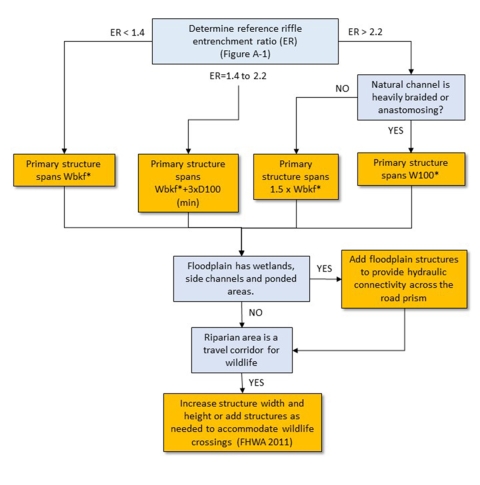Photo By/Credit
USFWS
Date Shot/Created
04/24/2024Media Usage Rights/License
Public Domain
Image
This decision tree starts with a block at the top where determines the reference riffle entrenchment ratio using figure A-1 from this document. If the entrenchment ratio is less than 1.4, the next block recommends a primary structure spanning the bankfull width. If the entrenchment ratio is between 1.4 and 2.2 the next block recommends the primary structure spanned the bankfull width plus three times the D100 minimum. If the entrenchment ratio is greater than 2.2 the next block asks if the natural channel is heavily braided or anastomosing? If the answer is no, the primary structure should span at least 1.5 times the bankfull width. If the answer is yes, the primary structure should span the 100-year floodplain width. For all entrenchment ratios one now moves to the next block which asks if the floodplain has wetlands side channels and ponded areas. If the answer is yes, the next block recommends adding floodplain structures to provide hydraulic connectivity across the road prism. If the answer is no, the next question asks if the riparian area is a travel corridor for a wildlife. If the answer is yes, the next block recommends increasing the structure width and height or adding structures as needed to accommodate wildlife crossings with a reference to FHWA 2011. For all crossing structures, consider scaling the width up to include higher flood flows expected during the design service life. If no increase is anticipated, use current conditions. Refer to https://arcticeds.org/ for climate data which can be used in engineering design.
